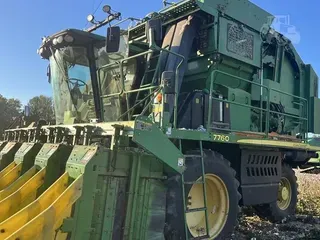A survey of more than 150 equipment manufacturing companies released by the Association of Equipment Manufacturers warns that U.S. equipment manufacturers continue to face supply-chain issues and a persistent labor shortage nearly three years after the pandemic began.
AEM surveyed 179 equipment manufacturing executives on the causes of supply-chain disruptions and bottlenecks and the impact it has on production, lead times and profits. The survey also asked about availability of components and optimal inventory levels, and queried executives about solutions to address these supply chain challenges.
[RELATED: AEM reports an uptick in 100+ HP 2WD sales in October]
Nearly all respondents (98 percent) still face supply-chain issues, with more than half of respondents (58 percent) experiencing continuously worsening supply-chain conditions. The two driving factors of current supply-chain disruptions are workforce shortages and access to intermediate components for production.
Far too many equipment manufacturers still feel the impact of the Covid-19 pandemic and supply-chain disruptions on operations, lead times on components, labor force participation and financial performance, says Kip Eideberg, AEMs senior vice president of government and Industry relations. The impact of this supply-chain crunch is only worsened by nationwide workforce shortages seen across country, which is particularly noticeable on our shop floors.
AEM conducted the survey in October. Respondents included 112 original equipment manufacturers and 56 component manufacturers.
Key findings include:
- Nearly all respondents (98 percent) are still facing supply-chain issues.
- Six-in-10 equipment manufacturers are experiencing continuously worsening supply-chain conditions.
- The two driving factors of the disruption are workforce shortages and access to intermediate components for production.
- Six-in-10 equipment manufacturers are still having issues in workforce recruitment and retention.
- Year to date, equipment manufacturers are seeing an average of 12 percent production loss and are forecasting a slightly lower but still significant production loss of 8.2 percent in 2023. This production loss is especially critical when many equipment manufacturers are fully sold out for 2023.
- Year to date, equipment manufacturers are seeing an average of 8.6 percent profit margin loss and are forecasting a 6.4 percent profit margin loss in 2023.
- Lead times continue to be an obstacle. While lead times understandably increased during the pandemic, they have only continued to grow as things stabilized, jumping from an average of two (2.42) months in 2019, to seven months (6.92) in 2022.
- Due to this supply-chain crunch, certain parts remain difficult to acquire. In the agriculture sector, the most sought-after component are tracks (and their included components); only 27 percent of inventory is available of that component, which the manufacturer would deem optimal for their manufacturing operations. In both agriculture and construction sectors, its semiconductors and chips, with an average of 44 percent optimal inventory available across both sectors.
- There is no single solution to ongoing supply-chain disruptions.
- Equipment manufacturers of all sizes continue to use a multitude of responses to try to overcome ongoing supply-chain disruptions. Responses include increasing inventory and supplier base, more vertical integration of supply chains and certifying alternative suppliers.

